Animals
Elm Farm Ollie Day
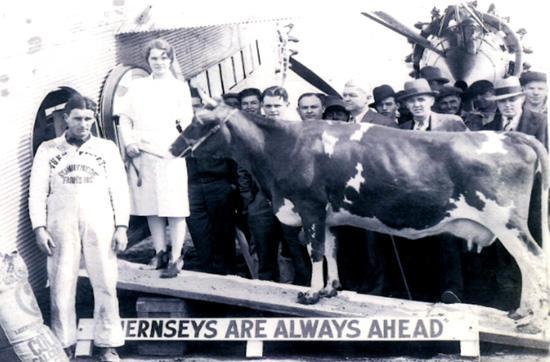
Feb. 18 is Elm Farm Ollie Day, commemorating the first flight in a plane by a cow. An article posted over at rootsweb.ancestry.com tells us that Elm Farm Ollie (aka Sunnymede Ollie, Nellie Jay, or Sky Queen) is remembered each year at the dairy festival in Mount Horeb, Wisconsin:
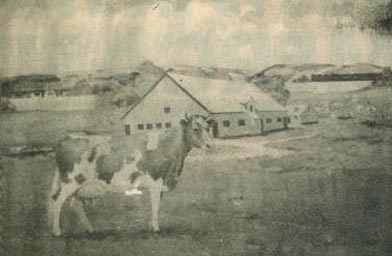
A 1930 news-wire story provided details about the historic flight:
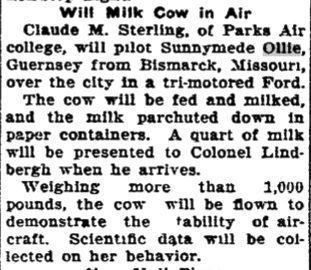
Claude M. Sterling, of Parks Air college, will pilot Sunnymede Ollie, Guernsey from Bismarck, Missouri, over the city in a tri-motored Ford.
The cow will be fed and milked and the milk parachuted down in paper containers. A quart of milk will be presented to Colonel Lindbergh when he arrives.
Weighing more than 1000 pounds, the cow will be flown to demonstrate the ability of aircraft. Scientific data will be collected on her behavior.
-The Evening Tribune (Albert Lea, Minn.) - Feb. 18, 1930.
More info at wikipedia and mustardmuseum.com.
Posted By: Alex - Tue Feb 18, 2020 -
Comments (7)
Category: Animals, Farming, Air Travel and Airlines, 1930s
Follies of the Madmen #466
This was part of a campaign that made far-fetched comparisons between the animal kingdom and a desire to eat Jello.Source.
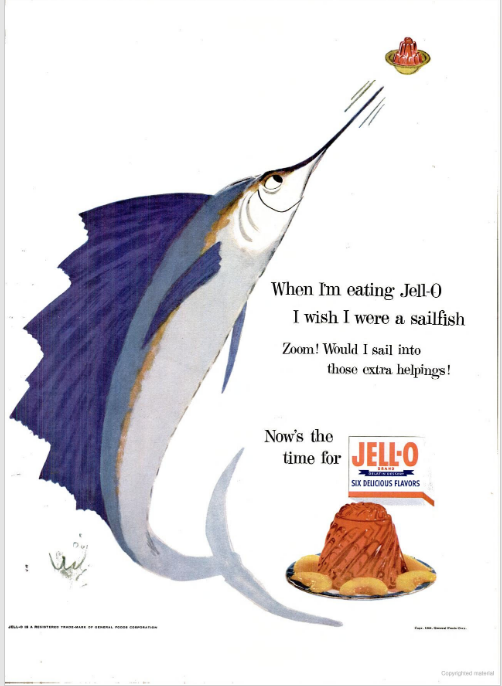
Posted By: Paul - Sat Feb 15, 2020 -
Comments (0)
Category: Animals, Business, Advertising, Food, 1950s
Explosion, Assault, Ostriches
Somehow I missed this video from 2012. Theorized at the time to be a viral marketing ploy. But I can't find any evidence it was ever resolved. Can WU-vies pin down a definitive answer?
Posted By: Paul - Mon Feb 10, 2020 -
Comments (3)
Category: Ambiguity, Uncertainty and Deliberate Obscurity, Animals, Violence, Advertising
Throwing Animals for Taking Death Leaps
Circus proprietor Edward Wulff patented a curious device in 1904. It was an apparatus that catapulted animals upwards. It had the rather alarming title, "Throwing Animals For Taking Death Leaps" (Patent No. 774,017). Wulff claimed it could throw "horses, elephants, monkeys, &c.." The patent illustration shows a horse, so these were evidently the primary animal being thrown.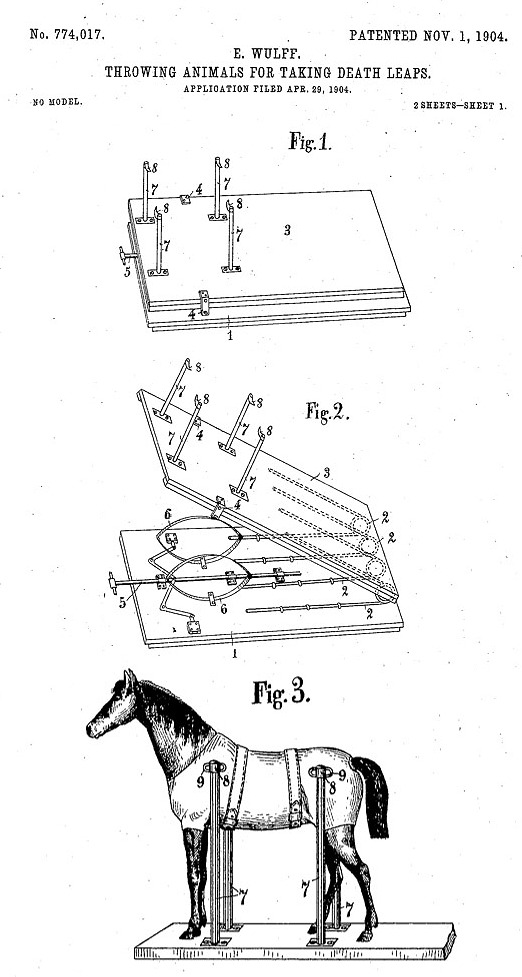
The device was relatively straight-forward. The animals were placed in a harness that held them on top of a spring-powered platform. The release of the springs then flung the animals upwards. Wulff emphasized that his apparatus was designed, via the harness, to place the projecting force on the full body of the animal, rather than just their legs. He seemed to feel that this was a safer, more humane method of throwing animals.
Wulff explained that this device was designed to be used as part of a circus stunt known as "a death leap or so-called 'salto-mortale.'" But he didn't offer any further explanation about the nature of the stunt or how far the animals were flung. And I couldn't locate any descriptions of this stunt in other sources. All the references to a 'death leap' stunt that I came across involved human trapeze artists, not animals. So I was about to conclude that the stunt would have to remain a mystery until I got the idea to check if Wulff had filed the patent in any other countries. Sure enough, there was a British version of the patent, and while its text was almost identical, it had a different title that explained the nature of the stunt:
So Wullf's apparatus was evidently designed to somersault animals. Not simply to catapult them upwards. This made me recall something I posted here on WU back in 2012. It was a brief item that appeared on the front page of the Washington Post's 'Miscellany Section' on April 21, 1907, titled 'Horse Can Turn Somersaults.' At the time, this random reference to a somersaulting horse totally baffled me. I even suspected it was a hoax. But now it makes sense. It must have been a circus stunt. Perhaps it even made use of Wulff's invention. I can't find any evidence that Wulff's circus was in Boston in April 1907, but it was in New York in December of that year.
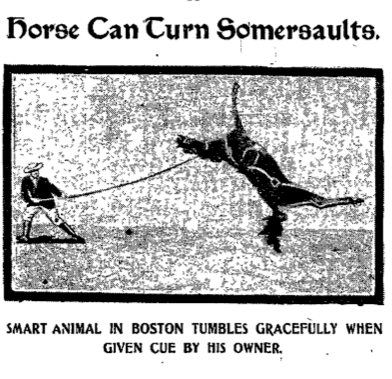
Wulff, it turns out, was the author of another odd patent, granted to him in 1887. The patent was titled, "Means and apparatus for propelling and guiding balloons." He intended to use birds such as "eagles, vultures, condors, &c" to guide balloons. The birds would be attached to the balloon by a harness, and an aeronaut would then force them to fly in the desired direction, thereby propelling the balloon.
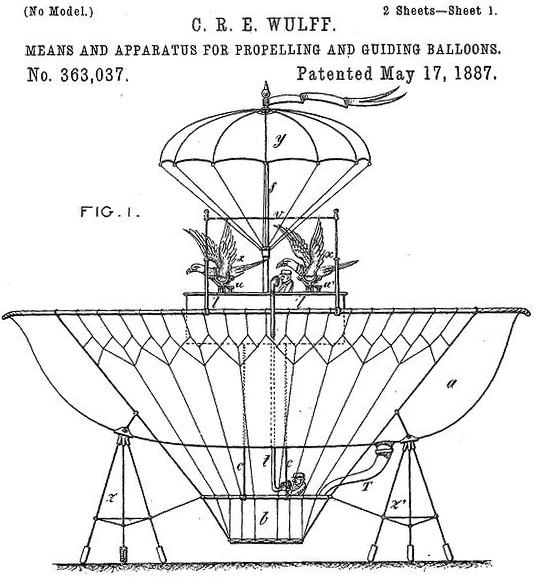
This patent has received quite a bit of attention, because there's a lot of interest in the history of early attempts at flying machines. Knowing that Wulff was a circus proprietor, I wonder if he intended his eagle-guided balloon to be used as part of a circus act, rather than as a practical flying machine.
Posted By: Alex - Sun Feb 09, 2020 -
Comments (6)
Category: Animals, Inventions, Patents, ShowBiz, 1900s
Obst
Posted By: Paul - Sun Feb 02, 2020 -
Comments (1)
Category: Animals, Anthropomorphism, Food, Surrealism
Human-Animal Breastfeeding
In his 1826 book A Treatise on the Physical and Medical Treatment of Children, the American physician William Potts Dewees offered this advice for pregnant women: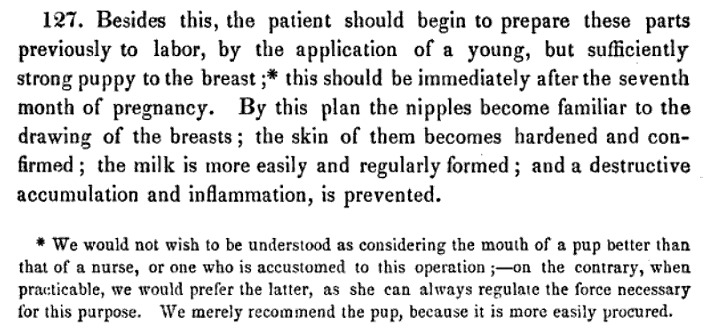
The Wikipedia article Human-animal breastfeeding offers some background info:
English and German physicians between the 16th and 18th centuries recommended using puppies to "draw" the mother's breasts, and in 1799 the German Friedrich Benjamin Osiander reported that in Göttingen women suckled young dogs to dislodge nodules from their breasts. An example of the practice being used for health reasons comes from late 18th century England. When the writer Mary Wollstonecraft was dying of puerperal fever following the birth of her second daughter, the doctor ordered that puppies be applied to her breasts to draw off the milk, possibly with the intention of helping her womb to contract to expel the infected placenta that was slowly poisoning her.
Animals have widely been used to toughen the nipples and maintain the mother's milk supply. In Persia and Turkey puppies were used for this purpose. The same method was practised in the United States in the early 19th century; William Potts Dewees recommended in 1825 that from the eighth month of pregnancy, expectant mothers should regularly use a puppy to harden the nipples, improve breast secretion and prevent inflammation of the breasts. The practice seems to have fallen out of favour by 1847, as Dewees suggested using a nurse or some other skilled person to carry out this task rather than an animal.
Posted By: Alex - Sat Jan 18, 2020 -
Comments (1)
Category: Animals, Medicine, Nineteenth Century, Pregnancy
Louise Arner Boyd
If you can get past the robot voice in the video, you'll get all the amazing facts of this gal's life.Her Wikipedia page.
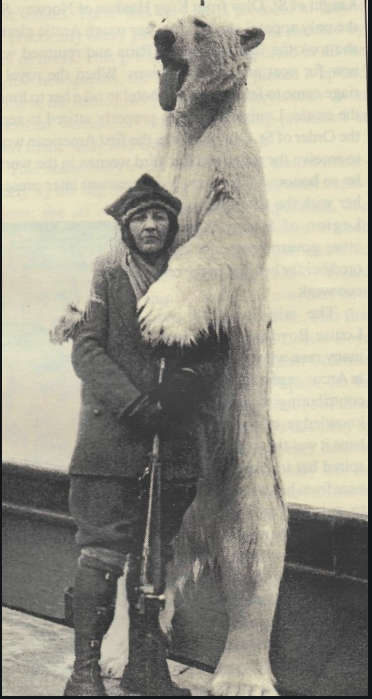
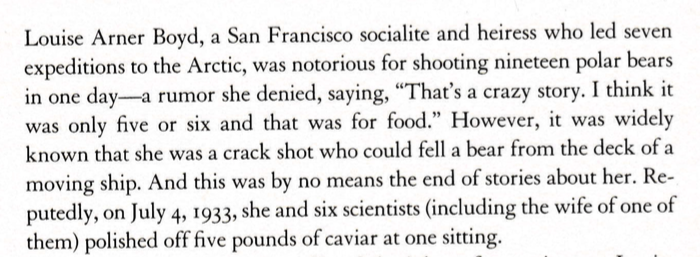
Text source. (Page taken from hardcopy, not available online.)
Posted By: Paul - Tue Jan 14, 2020 -
Comments (1)
Category: Animals, Eccentrics, Explorers, Frontiersmen, and Conquerors, Twentieth Century
Janelle Shane on Artificial Intelligence and Weirdness
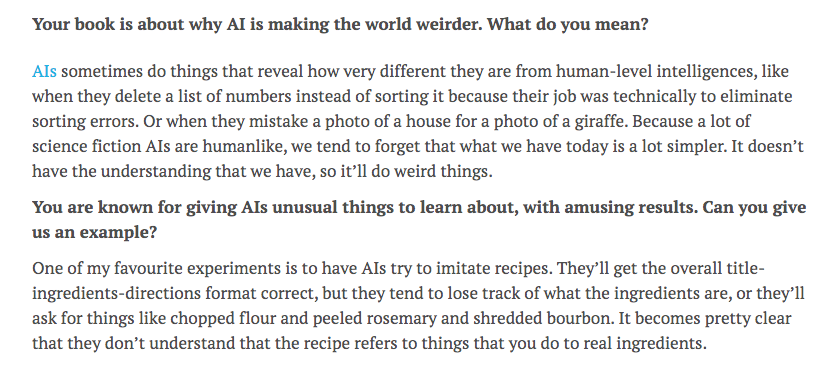
Posted By: Paul - Fri Jan 10, 2020 -
Comments (2)
Category: Ambiguity, Uncertainty and Deliberate Obscurity, Animals, Technology, AI, Robots and Other Automatons
Election 2020
Expect absurdist acts of political theater throughout the new year, from all sides.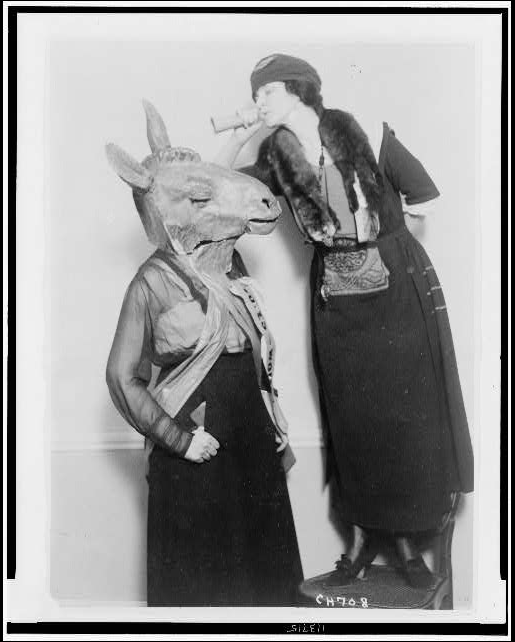
[Mrs. Guilford Dudley of Nashville with ear trumpet, talking into ear of Democratic donkey, played by Mrs. Mary Semple Scott in skit at 1920 National American Woman Suffrage Association in Chicago]
Photo source.
Posted By: Paul - Fri Jan 03, 2020 -
Comments (7)
Category: Animals, Anthropomorphism, Politics, Twentieth Century
Percy the Fainting Pigeon
Percy was a prize-winning racing pigeon with an odd habit:No matter where he is or where you put him, Percy keeps up the pose. On the top of the television, on the rim of the cup he won at the Royal Welsh Show, or tossed in the air, he holds it.
Even putting him on the floor next to Suzie the cat doesn’t cause a twitch.
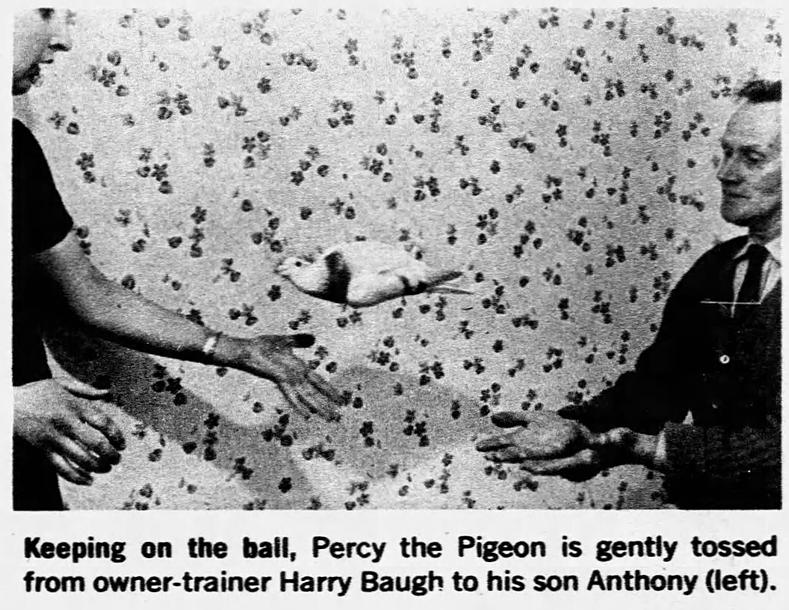
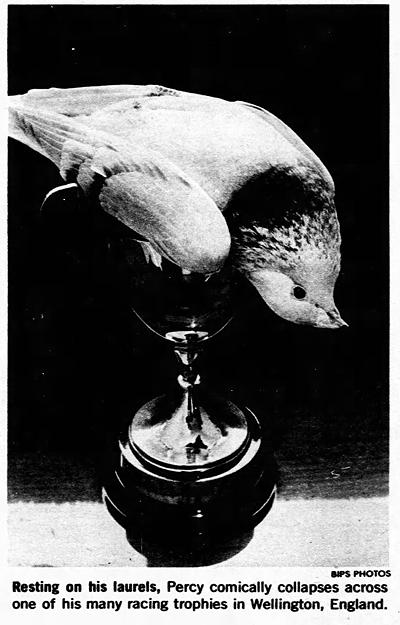
New York Daily News - Jan 19, 1969
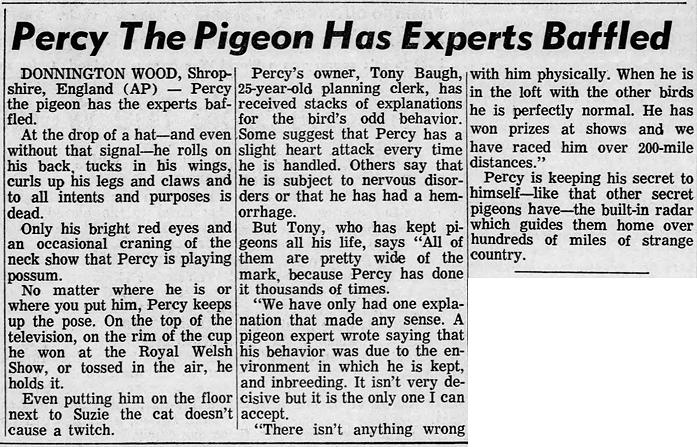
The Jackson Sun - Apr 10, 1968
Posted By: Alex - Fri Dec 27, 2019 -
Comments (4)
Category: Animals, 1960s

| Who We Are |
|---|
| Alex Boese Alex is the creator and curator of the Museum of Hoaxes. He's also the author of various weird, non-fiction, science-themed books such as Elephants on Acid and Psychedelic Apes. Paul Di Filippo Paul has been paid to put weird ideas into fictional form for over thirty years, in his career as a noted science fiction writer. He has recently begun blogging on many curious topics with three fellow writers at The Inferior 4+1. Contact Us |




